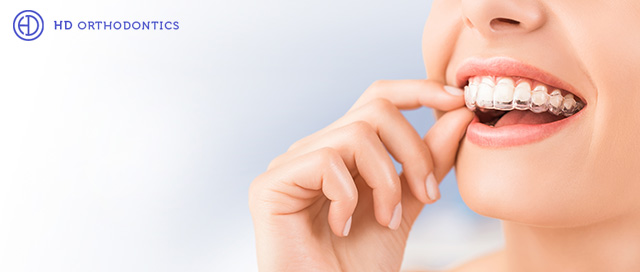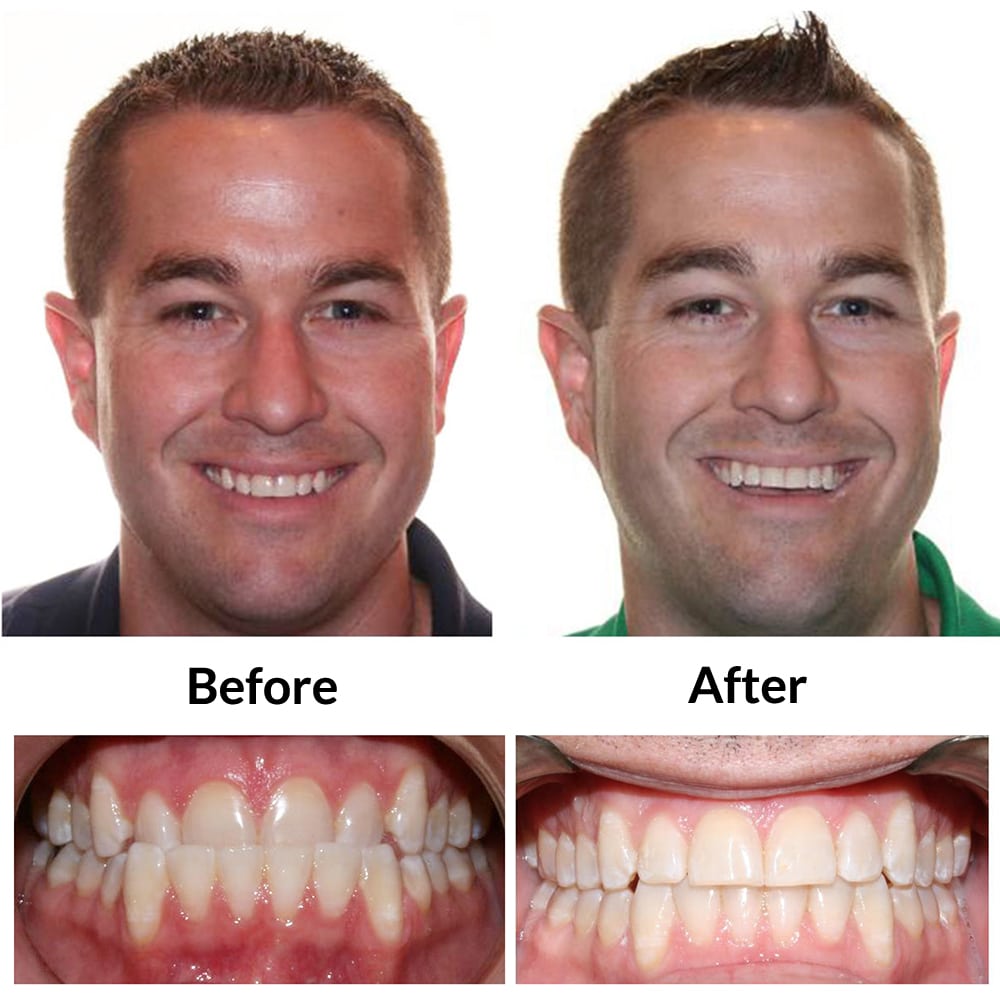Invisalign for Teens: A Modern Solution to Straightening Young Smiles
Invisalign for Teens: A Modern Solution to Straightening Young Smiles
Blog Article
Invisalign vs. Traditional Dental braces: Which Option Is Right for You?
When taking into consideration orthodontic treatment, the option in between Invisalign and traditional braces presents a number of vital factors that merit cautious analysis. Invisalign uses a very discreet alternative with removable aligners, while conventional dental braces supply an extra visible yet reliable solution for extreme misalignment.
Summary of Treatment Choices

On the other hand, conventional dental braces consist of metal brackets and cords that are bonded to the teeth. This technique uses continuous pressure with time to accomplish placement. While efficient for complex orthodontic problems, conventional braces need regular brows through for modifications and can pose difficulties in keeping dental hygiene due to the problem of cleansing around cables and braces.
Both alternatives have their advantages, and the selection often depends upon particular dental problems, way of life choices, and person conformity. Ultimately, seeking advice from an orthodontic specialist is critical for identifying the most appropriate treatment plan tailored to individual needs. Understanding the nuances of each option can considerably influence the total success of orthodontic therapy.
Visual Factors To Consider
A substantial variable affecting the option between Invisalign and conventional braces is the visual allure each therapy uses. Invisalign aligners are crafted from clear plastic, making them virtually invisible when worn. This very discreet look is especially appealing to grownups and young adults that might really feel self-conscious concerning their orthodontic therapy. The ability to maintain an all-natural smile throughout the positioning process can significantly boost the individual's confidence in specialist and social settings.
On the other hand, conventional dental braces consist of steel brackets and cords, which can be much more recognizable. While improvements in orthodontic technology have caused the advancement of smaller braces and colored elastics, conventional dental braces still preserve a more noticeable account. For some people, the visibility of dental braces might discourage them from looking for necessary treatment.
Inevitably, the choice between Invisalign and typical braces may depend upon personal preferences pertaining to visual appeals. Individuals that focus on discretion typically favor Invisalign, while those that are less concerned regarding exposure might go with conventional dental braces. Recognizing the visual implications of each choice is critical for making an informed decision that aligns with one's lifestyle and choices.
Comfort and Convenience

In terms of benefit, Invisalign aligners are detachable, allowing people to appreciate their favored foods without limitation and keep optimum dental health. Cleaning and flossing are streamlined, as the aligners can click to investigate be secured during these routines, whereas traditional braces require careful maneuvering around brackets and wires.
Additionally, Invisalign's modern system enables for fewer orthodontic sees. People generally receive numerous collections of aligners at the same time, which can streamline the treatment procedure and minimize time spent in the orthodontist's chair. In contrast, traditional dental braces require routine adjustments, making them much less hassle-free for those with hectic schedules. Invisalign. Generally, the comfort and benefit of Invisalign make it an appealing selection for lots of individuals seeking orthodontic therapy.
Treatment Period and Efficiency
While both Invisalign and conventional dental braces are efficient in correcting dental imbalances, the duration of treatment can differ considerably in between the two alternatives. Normally, Invisalign treatment can take anywhere from 12 to 18 months, depending upon the intricacy of the instance. The clear aligners work by gradually moving teeth right into their wanted placements, and routine follow-ups with an orthodontist help make sure progression remains on the right track.
In contrast, typical braces commonly require a longer commitment, normally varying from 18 months to 3 years. This results from their fixed nature and the use of braces and cords, which can be much more efficient for severe misalignments and complicated cases (Invisalign). The treatment efficiency of typical dental braces is well-documented, as they permit precise changes and greater control over tooth movement
Ultimately, the option between Invisalign and standard dental braces might rest on both the try this site anticipated treatment period and the specific oral concerns handy. Consulting with an orthodontist is vital, as they can provide tailored suggestions based on private needs, making sure the picked approach straightens with preferred timeframes and outcomes.
Price Comparison and Insurance Options
Price plays a substantial function in the decision-making process for people considering orthodontic treatment, whether choosing for Invisalign or conventional braces. On standard, the expense of Invisalign ranges from $3,000 to $8,000, while traditional dental braces normally cost in between $2,000 and $6,000. Factors affecting these expenses include the intricacy of the situation, the duration of therapy, and geographical location.
Insurance policy coverage can considerably impact out-of-pocket expenditures. Lots of dental insurance plans provide partial protection for orthodontic therapies, however the specifics can differ commonly. It is essential for people to evaluate their insurance coverage policies to establish the extent of insurance coverage for either option. Normally, traditional dental braces might be a lot more frequently covered by insurance policy plans compared to Invisalign, which some insurers classify as an aesthetic procedure.
Additionally, a number of orthodontic methods supply versatile settlement plans, making both treatment choices a lot more obtainable. Patients ought to ask about prospective funding alternatives and price cuts for upfront payments. Assessing the total expense, consisting of insurance benefits and payment plans, is vital for making a notified decision that lines up with both aesthetic choices and budget considerations.

Verdict
In recap, the selection between Invisalign and typical dental braces pivots on numerous aspects, consisting of visual preferences, comfort, treatment duration, and cost. Invisalign offers a very discreet, detachable option that facilitates oral hygiene and nutritional flexibility, while standard dental braces might be preferable for complicated dental issues and commonly come with a reduced price point. Ultimately, examination with an orthodontist is important to examine private circumstances and determine one of the most proper therapy alternative for achieving ideal oral placement.
When considering orthodontic treatment, the selection between Invisalign and conventional braces provides several essential variables that warrant cautious assessment.Comparing Invisalign and conventional braces reveals distinct therapy alternatives for orthodontic improvement.While both Invisalign and standard braces are effective in correcting oral imbalances, the period of therapy can differ dramatically between the 2 options.Expense plays a substantial role in the decision-making procedure for people considering orthodontic therapy, whether deciding for Invisalign or navigate to this website traditional dental braces.In summary, the choice between Invisalign and typical braces pivots on multiple variables, consisting of aesthetic choices, comfort, treatment duration, and cost.
Report this page